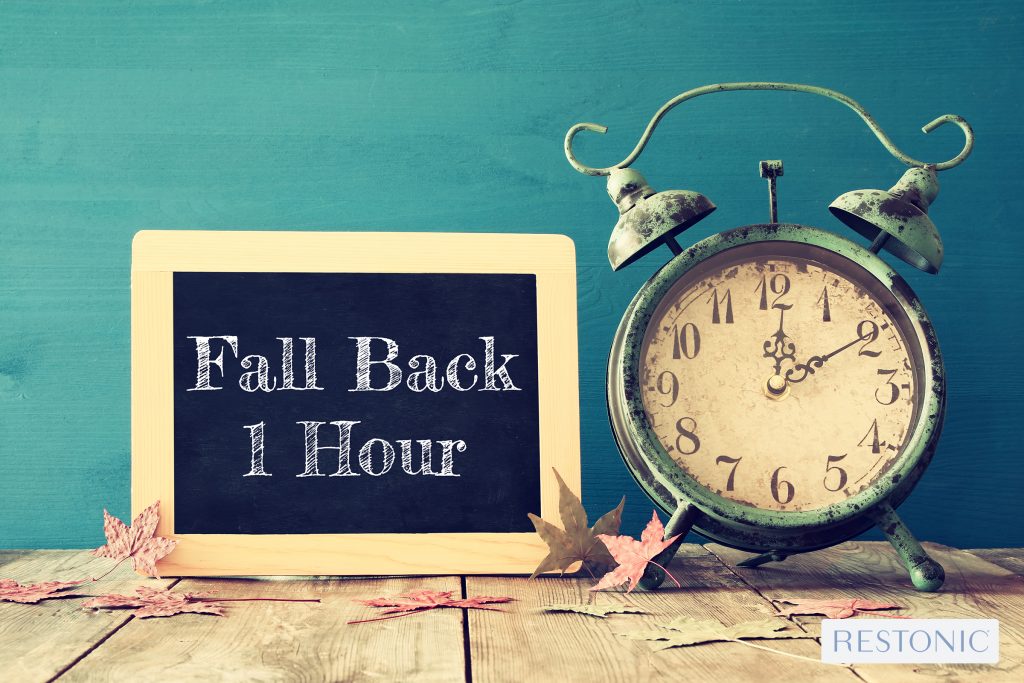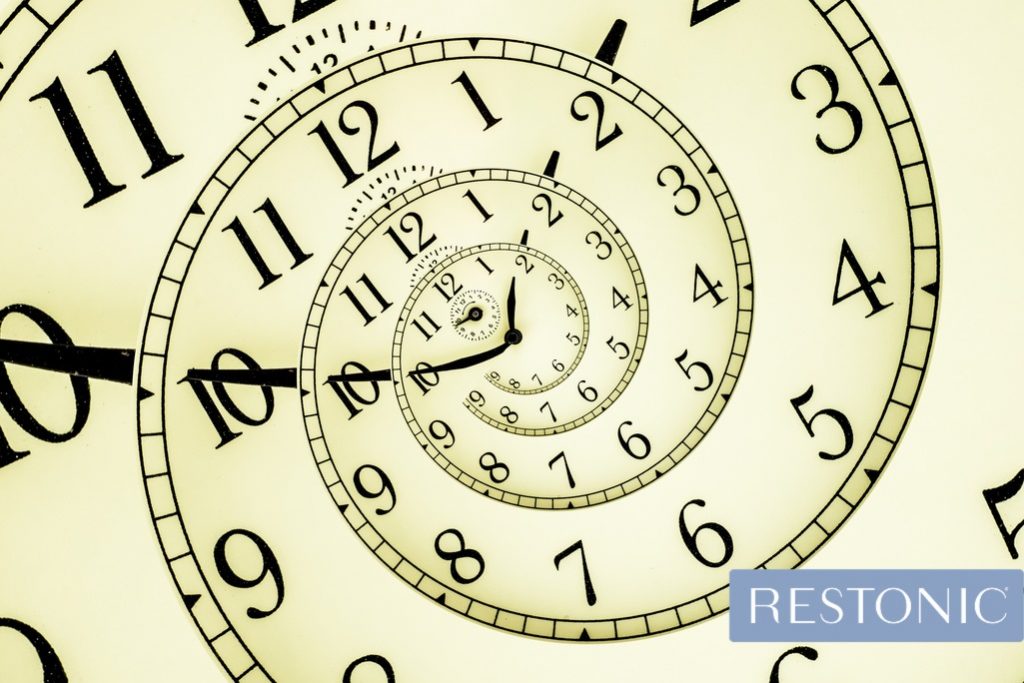Time to fall back into another time change
This coming autumn weekend daylight savings will have us “falling back” – gaining an extra hour of sleep during the early hours of Sunday morning. It sounds like the perfect ending to our Halloween shenanigans or candy comas, but a time change of any kind can be jarring on the body.
We’ve hung up our Halloween costumes and are ready to investigate daylight savings time and what we can do to not “fall” into an autumn slump.
Why do we have daylight savings?
 If you live in an area where there’s a wide shift in weather and daylight hours between summer and winter, your experience of the end of daylight savings will be a shift in seasons. Moving the clock backward in the fall reduces daylight in the evening by an hour, which means the sun will rise earlier in the morning (for a little while at least). When the time change began, it was hoped this shift would allow labors to be finished their workday at a more reasonable hour of the day.
If you live in an area where there’s a wide shift in weather and daylight hours between summer and winter, your experience of the end of daylight savings will be a shift in seasons. Moving the clock backward in the fall reduces daylight in the evening by an hour, which means the sun will rise earlier in the morning (for a little while at least). When the time change began, it was hoped this shift would allow labors to be finished their workday at a more reasonable hour of the day.
Daylight savings time was enacted on March 19, 1918 – but was unpopular due to factory workers waking up earlier and going to bed earlier. For years, it was inconsistent across the country as each state was given the option of whether to participate or not. Can you imagine the confusion, especially as a traveler? Long story short, due to the chaos, Congress got together in 1966 and implemented daylight savings time would occur on the last Sunday in October across the entire nation.
But why do we change the clocks at 2 a.m.?
The thinking goes – it’s late enough that most people would be home sleeping, with few public places affected by the change. In addition, changing the time well after midnight prevented the date from switching to yesterday. It would be confusing to go back to the previous day just to end it an hour later.
In modern times, excitement ensues in the fall when bars stay open an extra hour due to the change. A few years ago California passed a law that bars must close at 1:59 a.m. and therefore avoid that extra hour of serving drinks.
 Keep your body clock on time
Keep your body clock on time
Your body clock is a cluster of neurons deep inside your brain, generating rhythms, known as the sleep-wake-cycle. If your body clock is tuned to waking up with the sunlight, you’re going to benefit. “The body needs a signal every day to reset it,” says Dr. Alfred Lewy from Oregon University. Sunlight is the signal because it shines through the eyes and corrects the sleep cycle.
After a time change (or traveling across time zones) the body adjusts on its own after a few days. Below are several ways to help speed up the adjustment and reduce the pain along the way. Trust us, your body will welcome any help easing the pain of this weekend’s time change.
- Wake up at your normal time Sunday morning – Many people use the extra hour as an excuse to continue nighttime festivities and sleep in. Sleeping through Sunday’s early sunlight can leave you feeling out of sync for the start of the week.
- Eat well and exercise – An active lifestyle and healthy diet can do wonders for your sleep. Eat a hearty breakfast and grab the dog for a neighborhood stroll. Your body will stay in tune and continue its normal routine.
- Get a good night’s sleep on Sunday night – Use Sunday night to turn your room into a sleep zone. Shut down your gadgets and sleep. Plain and simple. Your body will be ready to conquer Monday morning.
- Know your body will adjust – It may take a few nights to feel 100% normal but fear not. Your body will get into the habit of the new light-dark cycle.
Daylight savings time fun facts
There are several states and territories that don’t participate in daylight savings. These include – Arizona, Hawaii, Puerto Rico, and the Virgin Islands.
- 27% of Americans claim DST makes them early for work or an appointment
- The idea of DST was thought of by Benjamin Franklin – years before being enacted
- Some countries refer to daylight savings time as “summer” such as Australia.
How do you manage falling back into the end of daylight saving time? We’d love to hear from you!
Eager for more sleep info you can really use?
Join our community
Facebook
and let's continue the conversation.
We'd love to hear what you have to say!
This blog does not provide medical advice. It is intended for general informational purposes only and does not address individual circumstances. It is not a substitute for professional medical advice, diagnosis or treatment and should not be relied on to make decisions about your health. Never ignore professional medical advice in seeking treatment because of something you have read on Restonic.com. If you think you may have a medical emergency, immediately call your doctor or dial 911.
